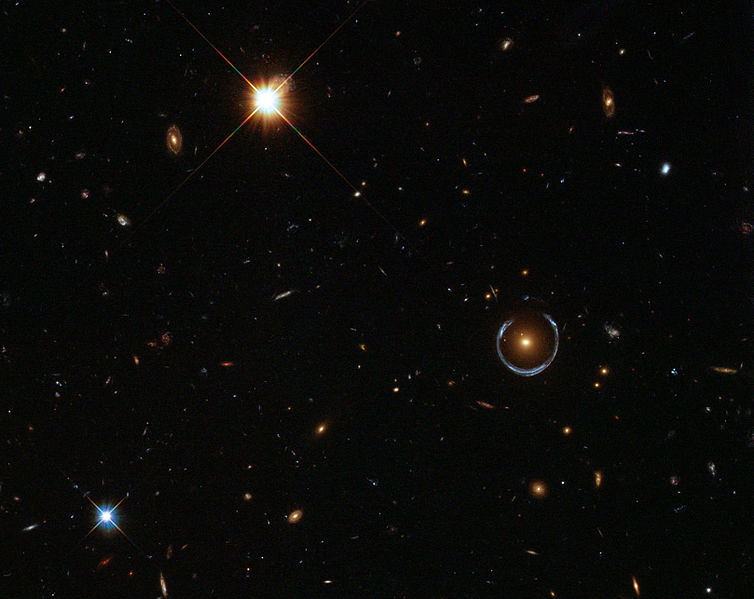Dosya:Lensshoe hubble.jpg

Bu önizlemenin boyutu: 754 × 599 piksel. Diğer çözünürlükler: 302 × 240 piksel | 604 × 480 piksel | 966 × 768 piksel | 1.280 × 1.018 piksel | 2.560 × 2.035 piksel | 3.235 × 2.572 piksel.
Tam çözünürlük ((3.235 × 2.572 piksel, dosya boyutu: 4,99 MB, MIME tipi: image/jpeg))
Dosya geçmişi
Dosyanın herhangi bir zamandaki hâli için ilgili tarih/saat kısmına tıklayın.
| Tarih/Saat | Küçük resim | Boyutlar | Kullanıcı | Yorum | |
|---|---|---|---|---|---|
| güncel | 11.34, 21 Aralık 2011 |  | 3.235 × 2.572 (4,99 MB) | Bulwersator | {{Information |Description ={{en|1=What's large and blue and can wrap itself around an entire galaxy? A gravitational lens mirage. Pictured above, the gravity of a luminous red galaxy (LRG) has gravitationally distorted the light from a much more dista |
Dosya kullanımı
Bu görüntü dosyasına bağlantısı olan sayfalar:
Küresel dosya kullanımı
Aşağıdaki diğer vikiler bu dosyayı kullanır:
- ar.wiki.x.io üzerinde kullanımı
- cs.wiki.x.io üzerinde kullanımı
- en.wiki.x.io üzerinde kullanımı
- en.wikiquote.org üzerinde kullanımı
- fa.wiki.x.io üzerinde kullanımı
- hu.wiki.x.io üzerinde kullanımı
- hy.wiki.x.io üzerinde kullanımı
- mk.wiki.x.io üzerinde kullanımı
- pa.wiki.x.io üzerinde kullanımı
- pl.wiki.x.io üzerinde kullanımı
- pnb.wiki.x.io üzerinde kullanımı
- pt.wiki.x.io üzerinde kullanımı
- sv.wiki.x.io üzerinde kullanımı
- vi.wiki.x.io üzerinde kullanımı

